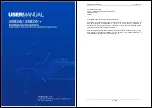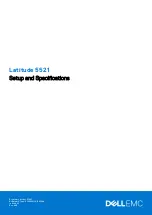
Maintenance strategy
Protocols
Maintenance Procedures
31
December 2003
The 397 Battery Charger Circuit immediately detects loss of AC power and raises a warning alarm
against AC-POWER that is not reported to the Avaya alarm receiver system. Certain maintenance objects
such as external DS1 timing report major alarms in this situation. When power is restored, the AC-
POWER alarm is resolved.
External alarm leads
Each cabinet provides two leads for one major and one minor alarm contact closure that can be connected
to external equipment. These are located on the Maintenance circuit packs. If the switch is under
warranty or a maintenance agreement, EXT-DEV alarms are generated by the equipment connected to
these leads and reported to the Avaya alarm receiving system. These might be used to report failures of
UPSs or battery reserves powering the switch. They are also commonly used to monitor adjuncts such as
AUDIX.
Protocols
This section describes the protocols handled by the system and the points where these protocols change.
Figure 3, Intra-port and Inter-port data transmission states,
on page 33 is a pictorial guide through intra-
port and inter-port data transmission state changes.
Figure 3, Intra-port and Inter-port data transmission
on page 33 illustrates the flow of data from DTE equipment, like a terminal or host, through DCE
equipment, like a modem or data module, into a communications port on the system. The data flow is
shown by solid lines. Below these lines are the protocols used at particular points in the data stream.
Figure 3, Intra-port and Inter-port data transmission states,
on page 33 is the treatment of
D-channels in ISDN-PRI and ISDN-BRI transmissions. PRI and BRI D channels transport information
elements that contain call-signaling and caller information. These elements conform to ISDN level-3
protocol. In the case of BRI, the elements are created by the terminal or data module; for the PRI, the
elements are created by the system, which inserts them into the D channel at the DS1 port.
Therefore, for ISDN transmissions, BRI terminals and data modules, and DS1 ports insert, interpret, and
strip both Layer-2 DCE information and Layer-3 elements. Also, the DS1 port passes Layer-3 elements to
the system for processing. For more information about Layer 2 or 3, see
Содержание CMC1
Страница 1: ...Maintenance Procedures 555 245 103 Issue 1 1 December 2003 ...
Страница 14: ...Contents 14 Maintenance Procedures December 2003 ...
Страница 158: ...Server initialization recovery and resets System resets 158 Maintenance Procedures December 2003 ...
Страница 416: ...Additional maintenance procedures IP Telephones 416 Maintenance Procedures December 2003 ...
Страница 426: ...Index X 426 Maintenance Procedures December 2003 ...
















































